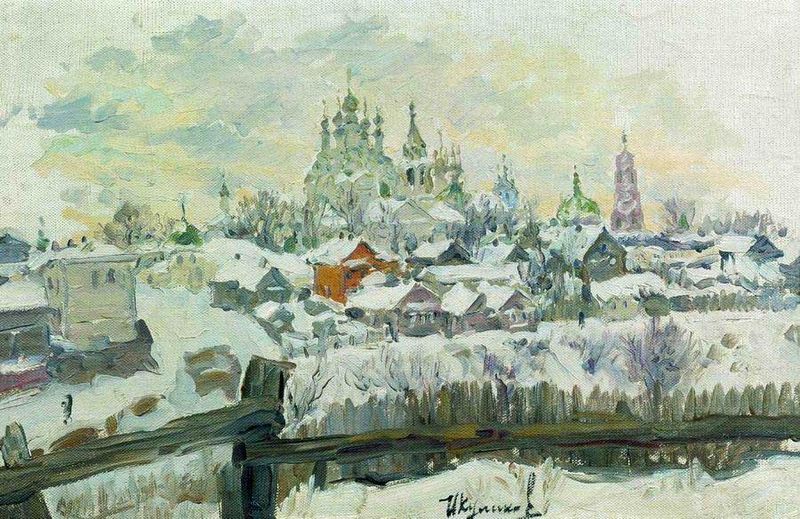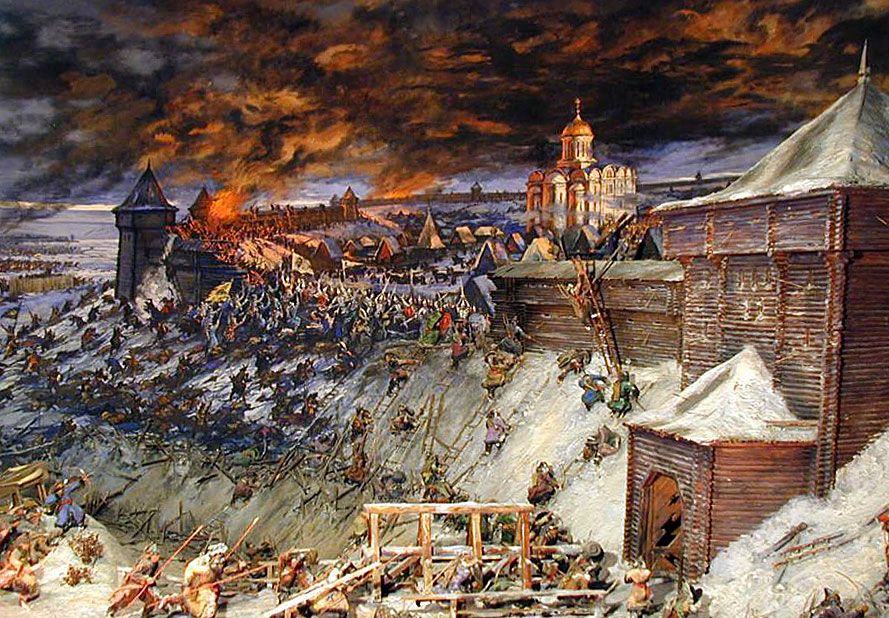The Principality of Murom arose in Russia in the 12th century, existed for almost 200 years, and during the Tatar-Mongol yoke it was ruined. The capital of the principality, the city of Murom, got its name from the Finogor tribe - Murom, who lived in this area from the middle of the first millennium AD. The territory of the principality was located in the basins of the rivers Veletma, Pra, Motra, Tesha.
A brief history of occurrence
In the period from the 10th to the 11th century, the city of Murom became a major shopping center. The power belonged to the specific princes of Kievan Rus, and the first ruler was Gleb Vladimirovich from the Rurik dynasty, the son of the Kiev prince Vladimir. After his death in 1015, power passed to the governor of the Grand Duke, and in 1024, when the territory was annexed to the Principality of Chernigov, Chernigov governors began to rule Murom. At the end of the 11th century, the Volga Bulgars briefly captured Murom, but were soon expelled. The sons of Vladimir Monomakh and Oleg Svyatoslavich fought for the territory. As a result of the confrontation, the sons of Vladimir won and gained power over the Chernihiv and Murom lands.

Until the beginning of the 12th century, the region where the Principality of Murom was then formed was under the rule of the Chernigov princes, until an internal conflict broke out between them. As a result, the city of Murom achieved independence and became the capital of a sovereign princedom. Ryazan also fell under the control of the new administrative formation, and the principality itself became known as Muromo-Ryazan. At the end of the 12th century there was a division into two separate principalities: Murom and Ryazan. This happened in the 1160s. n e.
Muromo-Ryazan principality
After the defeat and expulsion of Prince Yaroslav Svyatoslavich Vsevolod Olgovich in 1127, the sons of Yaroslav remained to rule Murom - Yuri, Svyatoslav and Rostislav. After the death of his elder brother, Rostislav occupied Moore, and appointed his son Gleb to rule in Ryazan. As a result of this appointment, the rights of the descendants of Svyatoslav were violated, and they turned for help to Yuri Dolgoruky and Yaroslav Olgovich.
In response to the hostile actions of his nephews, Rostislav joined forces with Izyaslav Mstislavich, Dolgoruky's main rival. In order to distract Yuri’s attention, in 1146 Rostislav attacked Suzdal, but Yuri’s sons rebuffed, and Rostislav retreated. Two years later, Rostislav teamed up with the Polovtsy and managed to regain power over Ryazan, and after another two years - and over Murom. The capital of the principality became Ryazan.

In 1153, Yuri Dolgoruky made an unsuccessful attempt to recapture the territory of the Murom-Ryazan principality, in response to these actions Rostislav again attacked Suzdal. Yuri managed to capture Ryazan, but was soon expelled from there by the Polovtsy. In the same year, Rostislav died, and the throne passed to his nephew Vladimir Svyatoslavich. Since 1160, the Principality of Murom separated from Ryazan and became an independent state. However, in the historical annals both regions appear as a single whole. This situation remained until the accession of the Principality of Murom to Moscow.
The period of development and conquest
In 1159, the princes of Murom merged with Vladimir. This successful alliance lasted until 1237 and allowed victory in many military campaigns. In 1152 and 1196, raids on Chernihiv were organized, in 1159 on the city of Vschizh, which is currently a small village in the Bryansk region. In 1164, 1172, 1184 and 1220 campaigns took place on the Volga Bulgaria, in 1170 - on Novgorod, 1173 - on Vyshgorod, and then on Vladimir, in 1186 - on Kolomna, in 1207 - on Pronsk in the Ryazan region. In 1213, an armed conflict took place near the walls of Rostov, and in 1216 the Battle of Lipitsy near the Gzu River took place. In 1228 and 1232 battles took place with the detachments of Mordovians, the Finno-Ugric people.
Tatar-Mongol yoke and the end of the principality
At the beginning of the 13th century, the Principality of Murom was attacked by the Mongol army. Cities were often ravaged, and in 1239, Murom himself was burned. What happened in the next 100 years is unknown to historians. In 1351, Prince Yuri Yaroslavich rebuilt Murom again, but 4 years later he was expelled by Prince Fedor Glebovich, whose origin is also unknown to historians. Yuri went to the Golden Horde to get permission from the khan for rule, but the khan preferred Fedor. After 40 years, the Horde issued a label on the reign of Moscow Prince Vasily I Dmitrievich, and the period of independence ended. In 1392, under the leadership of Vasily, the Principality of Murom and Nizhny Novgorod was annexed to Moscow.